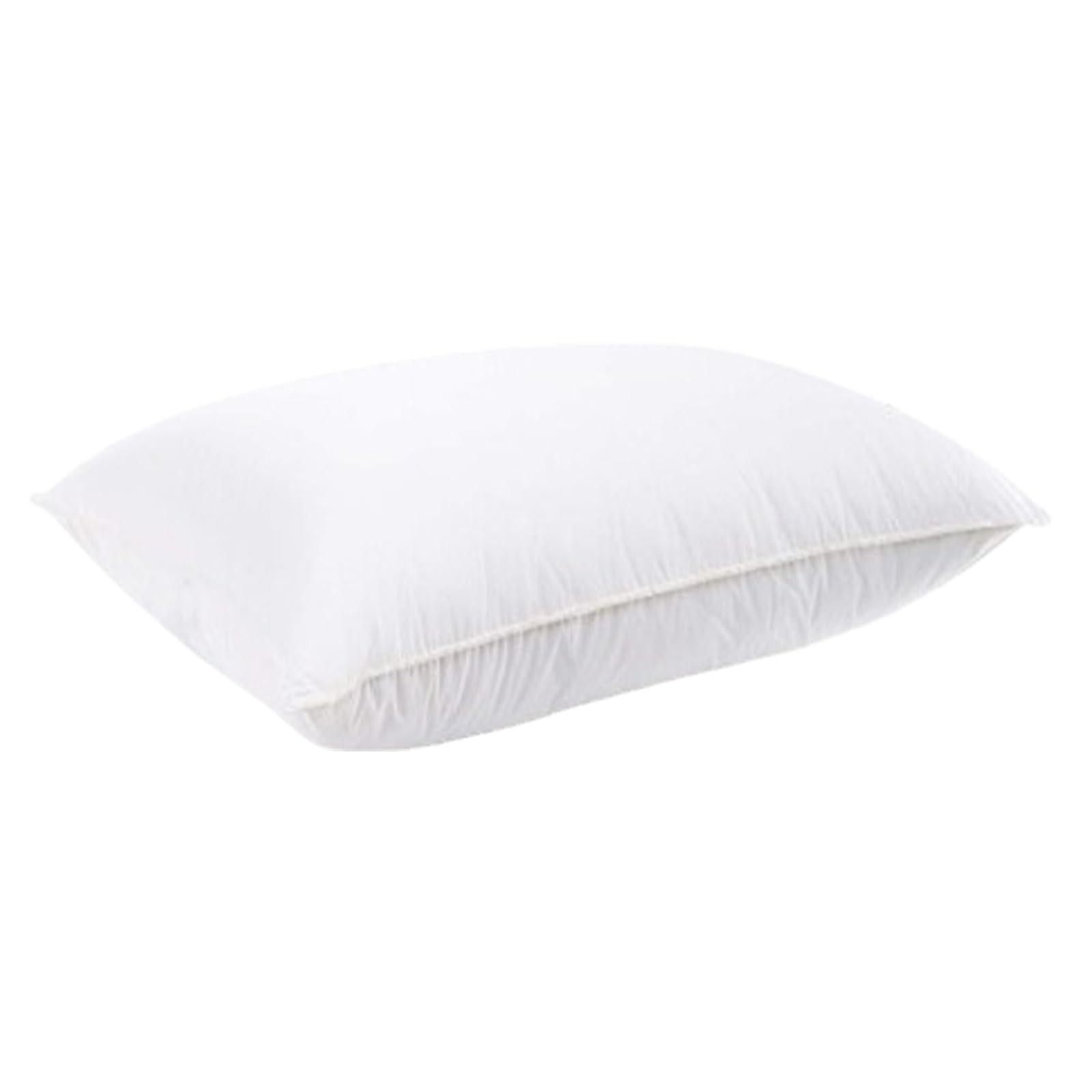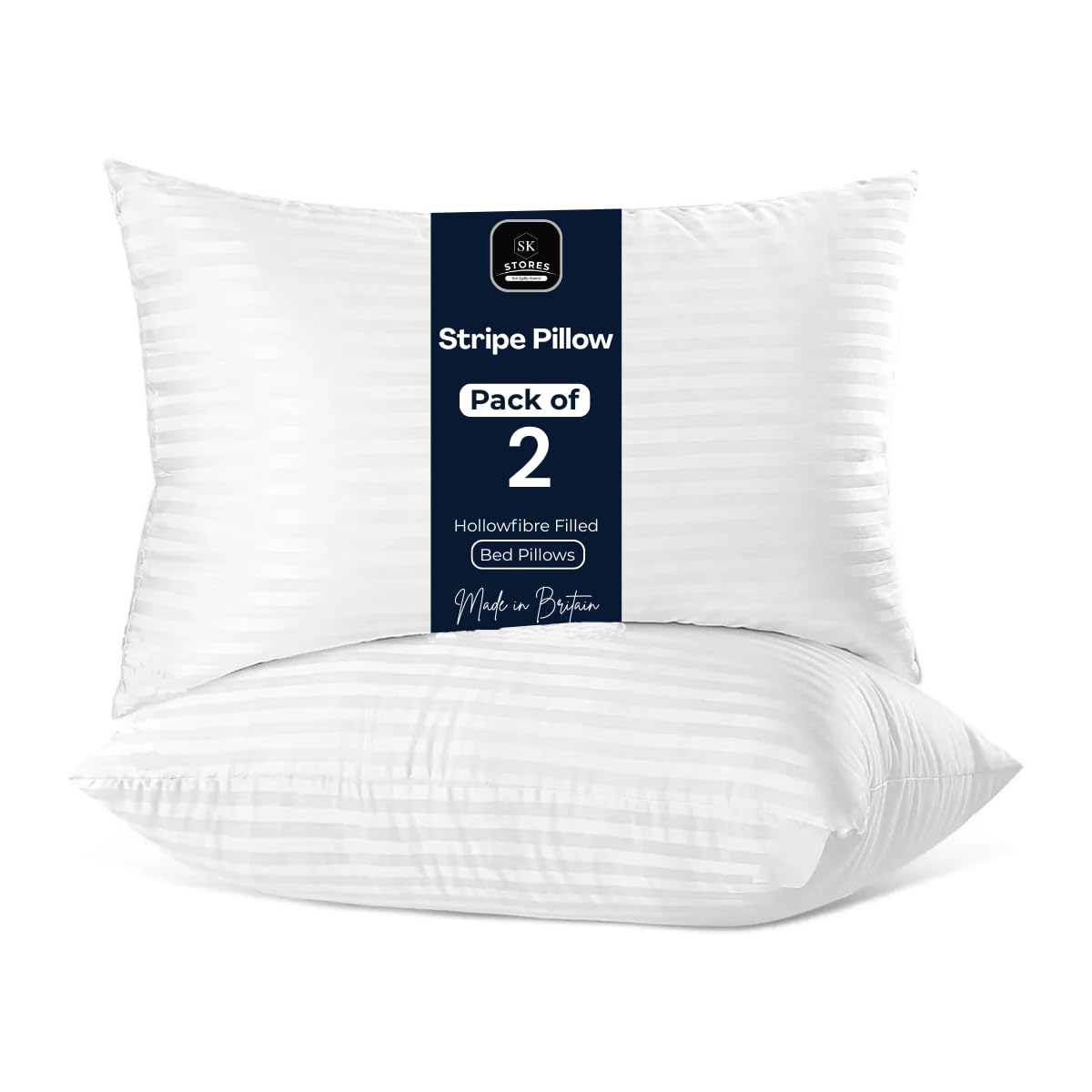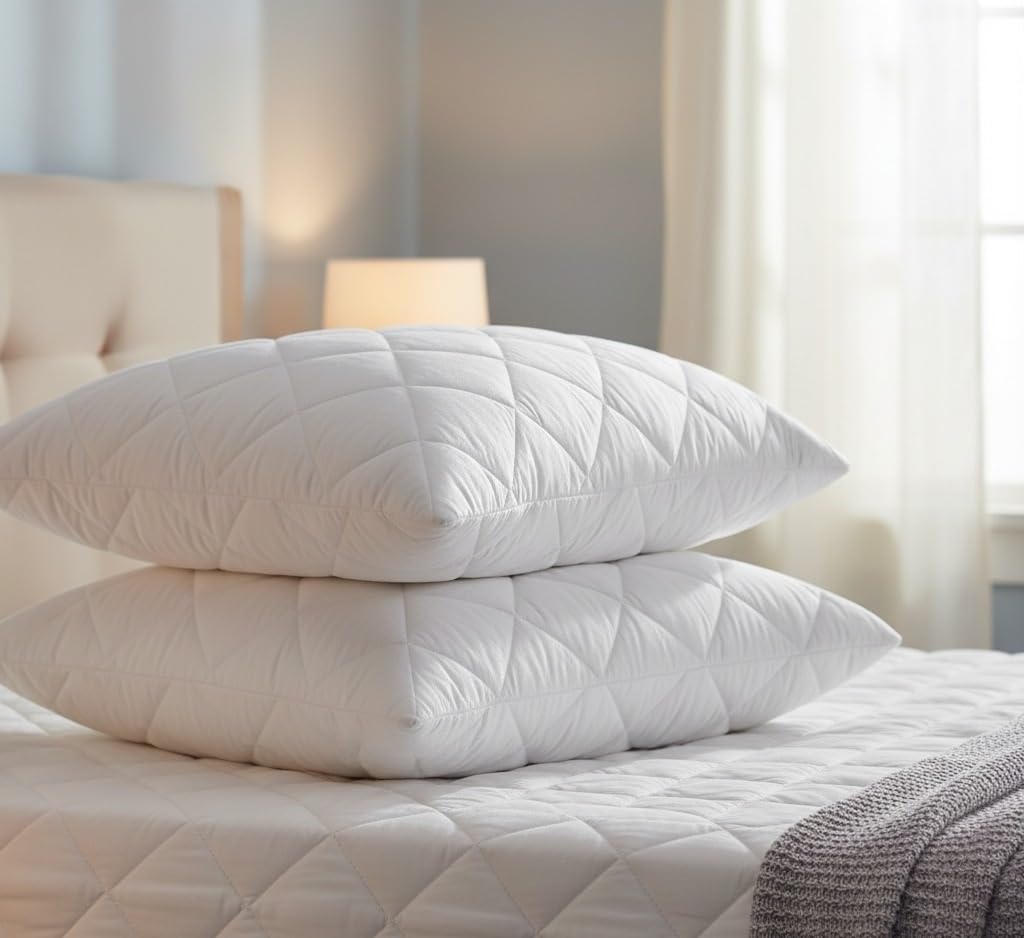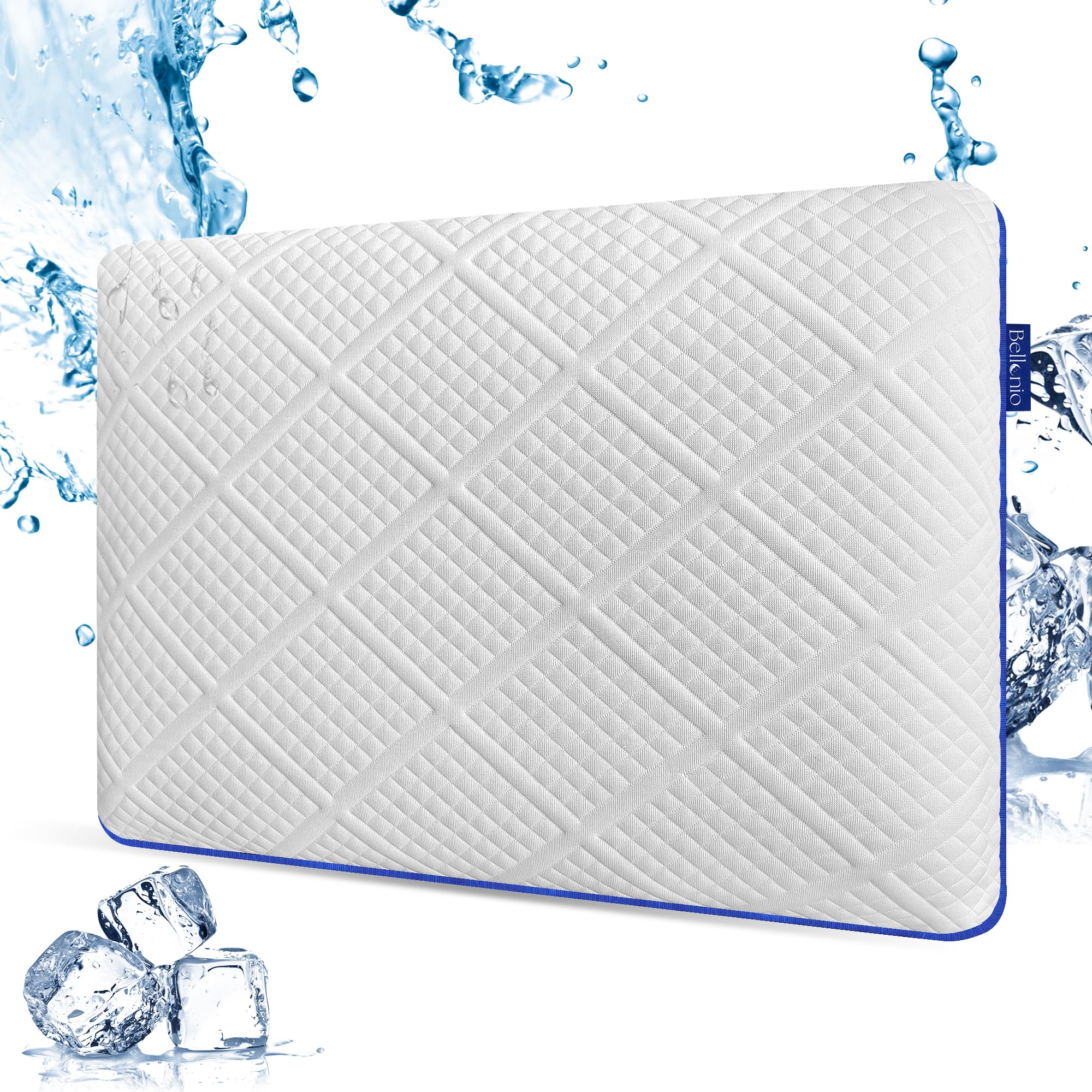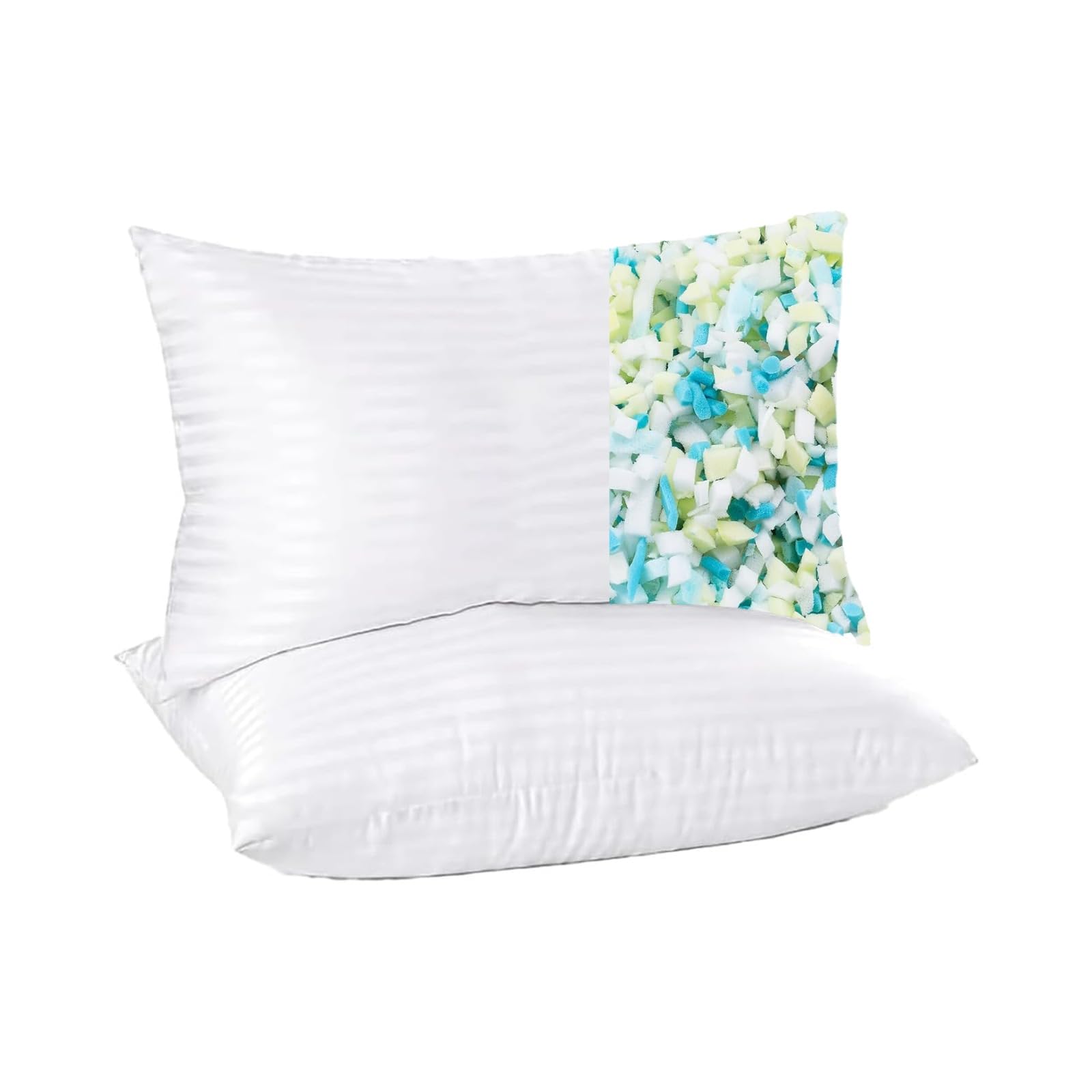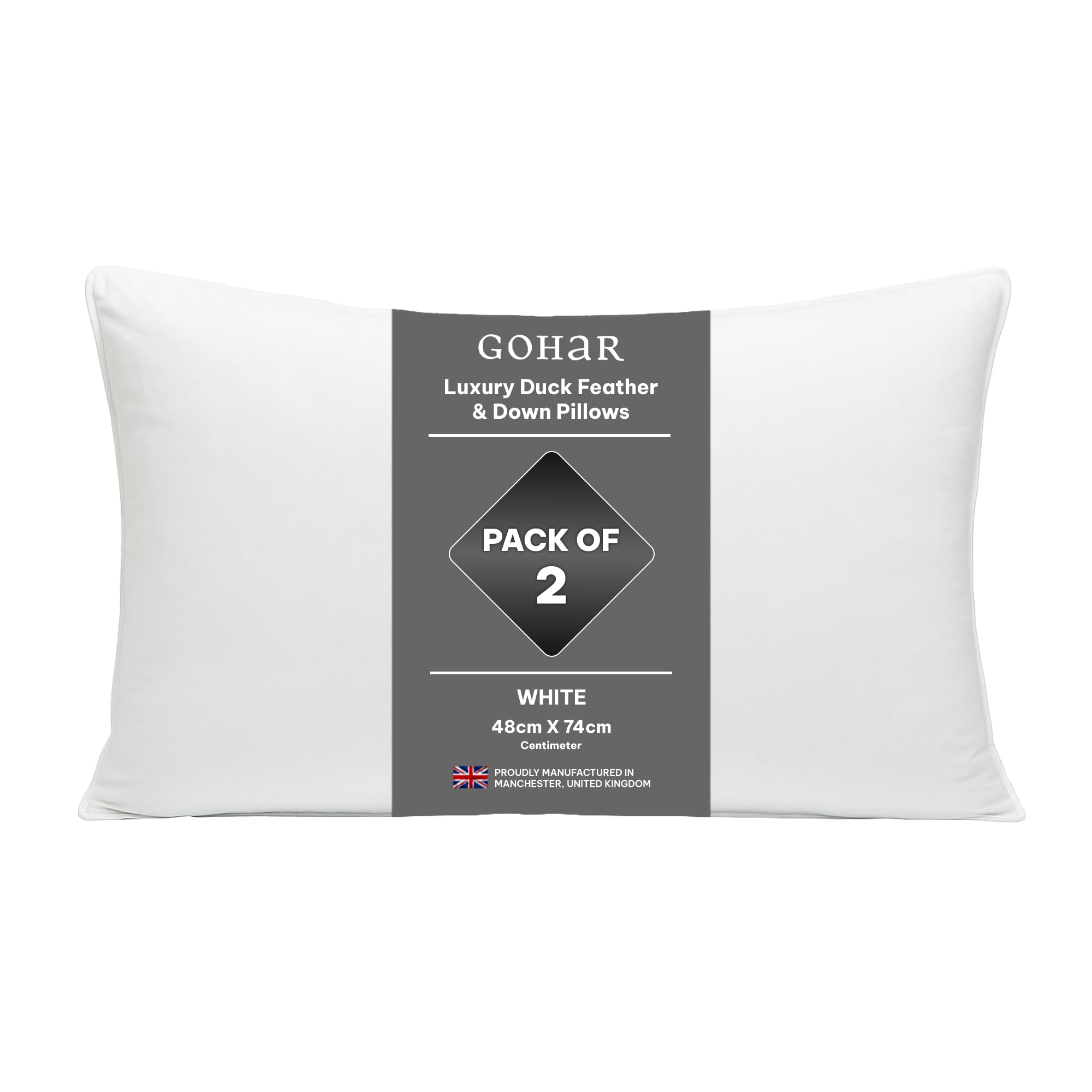Pillow protectors sit quietly under the pillowcase, yet they make pillows last longer, feel fresher, and stay more hygienic. If you wake with a blocked nose, or your pillow goes flat too quickly, a good protector and washing routine can help. This UK guide explains the benefits of pillow protectors, the differences between waterproof and breathable designs, and how to choose one that does not spoil the feel of your favourite pillow.
Neck comfort starts with pillows matched to sleep position and consistent loft.
Why use a protector
Pillows absorb sweat and oils nightly. Over time, this breaks down fill and creates odours. A protector is a washable barrier that catches moisture and dust before they reach the pillow. This keeps the core cleaner and extends lifespan. It also creates a smoother surface for pillowcases, which can feel nicer on the skin.
Waterproof vs breathable
Waterproof protectors use thin polyurethane membranes bonded to soft fabrics. They block spills and are ideal for allergies or for anyone who sweats heavily. Breathable knit protectors without membranes focus on airflow and dust control. If heat is a concern, choose a light, breathable protector and wash it frequently. If hygiene is the priority, a modern membrane protector can be very quiet and comfortable when paired with a cotton pillowcase.
Fit and feel
Choose a snug fit so fabric does not bunch under the case. Stretch knit protectors move with foam and latex, keeping the pillow’s feel. For fibre pillows, a slightly crisper protector can add a touch of structure that some people enjoy. Avoid noisy, plastic feeling covers. Modern protectors can be very quiet. If your protector changes the feel too much, try a thinner option or a different fabric.
Allergy considerations
Barrier fabrics with small pore sizes reduce exposure to dust mites. Wash protectors every one to two weeks in hot water if the fabric allows. Pair with a breathable mattress protector and regular bedroom ventilation to keep allergens lower overall. Many people notice fewer morning symptoms when they keep pillow surfaces clean and fresh.
Care and washing
Follow the label. Use mild detergent and avoid heavy softeners that can affect membranes or leave residues. Line dry where possible. If you tumble, use low heat. Replace protectors that pill heavily, lose their waterproofing, or feel rough. A clean, smooth protector improves sleep comfort more than most people expect.
Quiet, comfortable protectors that wash well feature in pillow protectors and pillows that work together. A full hygiene setup usually adds a mattress protector and breathable sheets.
FAQs
Do protectors make pillows hot?
Not if you choose light, breathable fabrics or modern PU membranes bonded to soft knits. Pair with a cotton pillowcase to keep the surface cool.
How often should I wash a protector?
Every one to two weeks, along with pillowcases. Wash sooner after illness or in hot weather.
Will a protector extend pillow life?
Yes. It reduces moisture and oil reaching the fill, which slows breakdown and helps pillows stay supportive longer.
